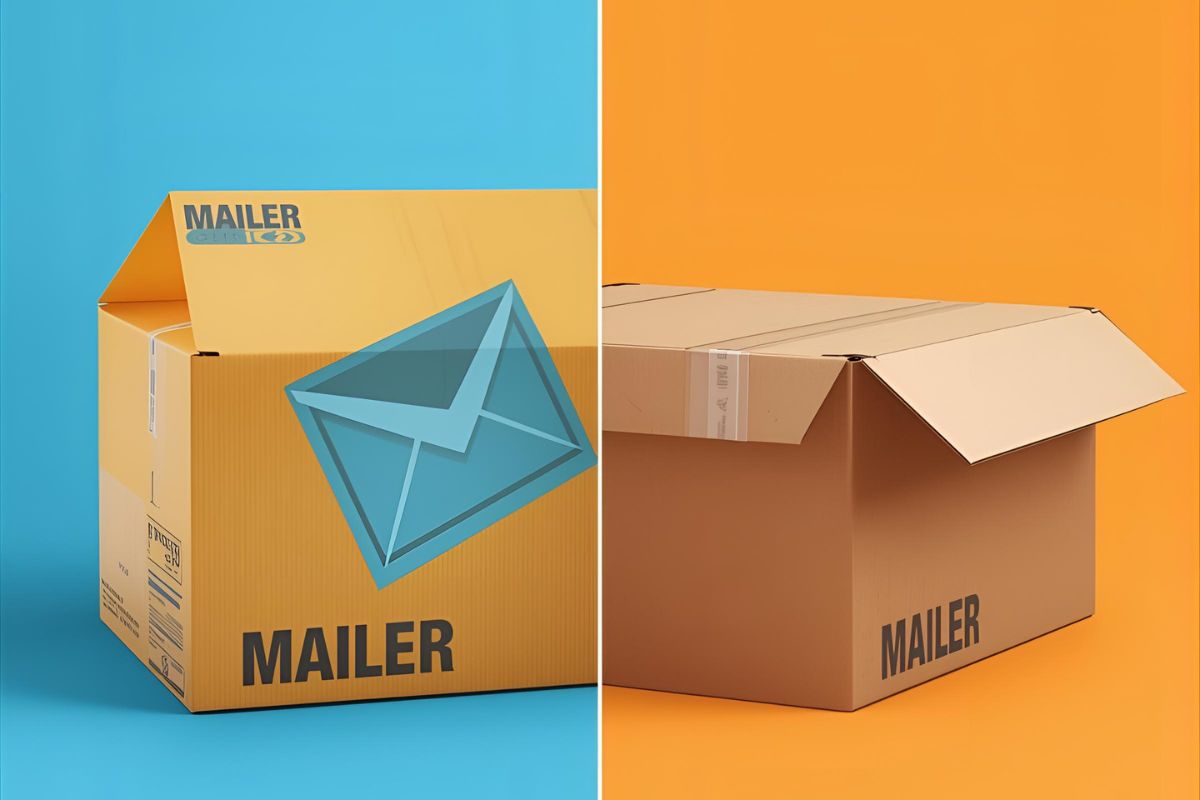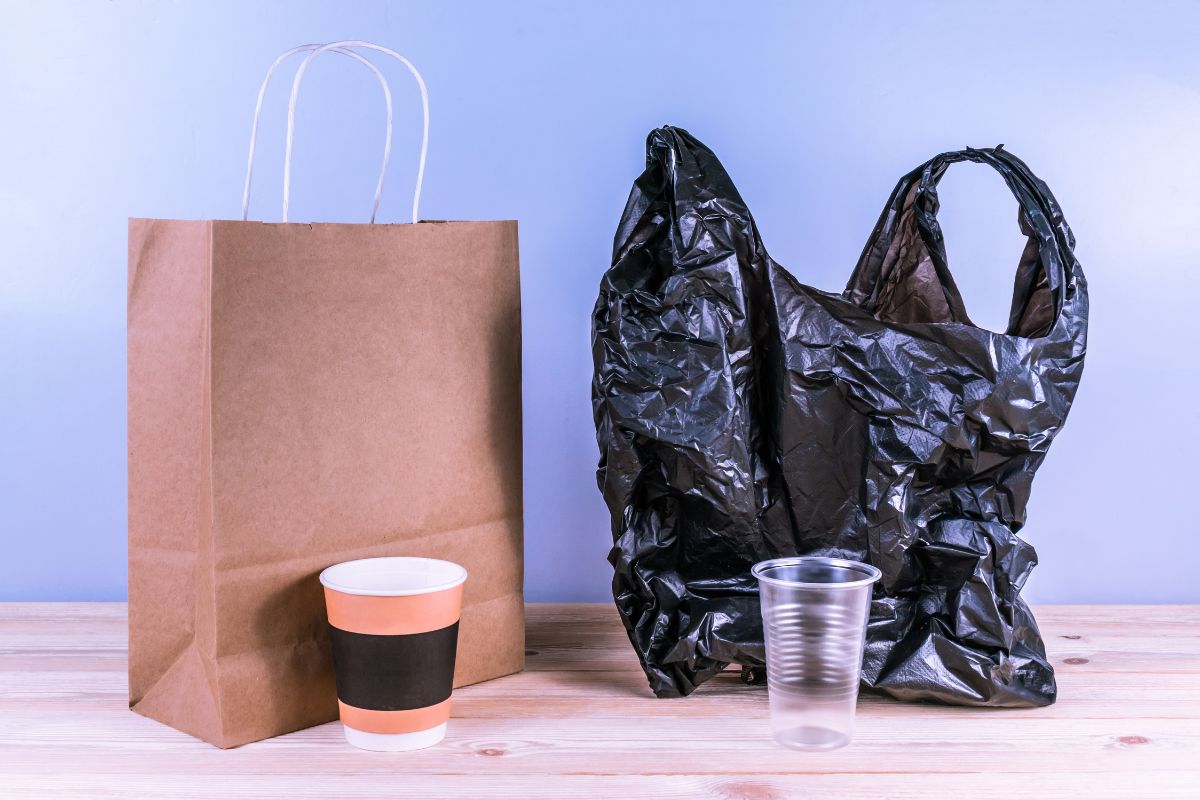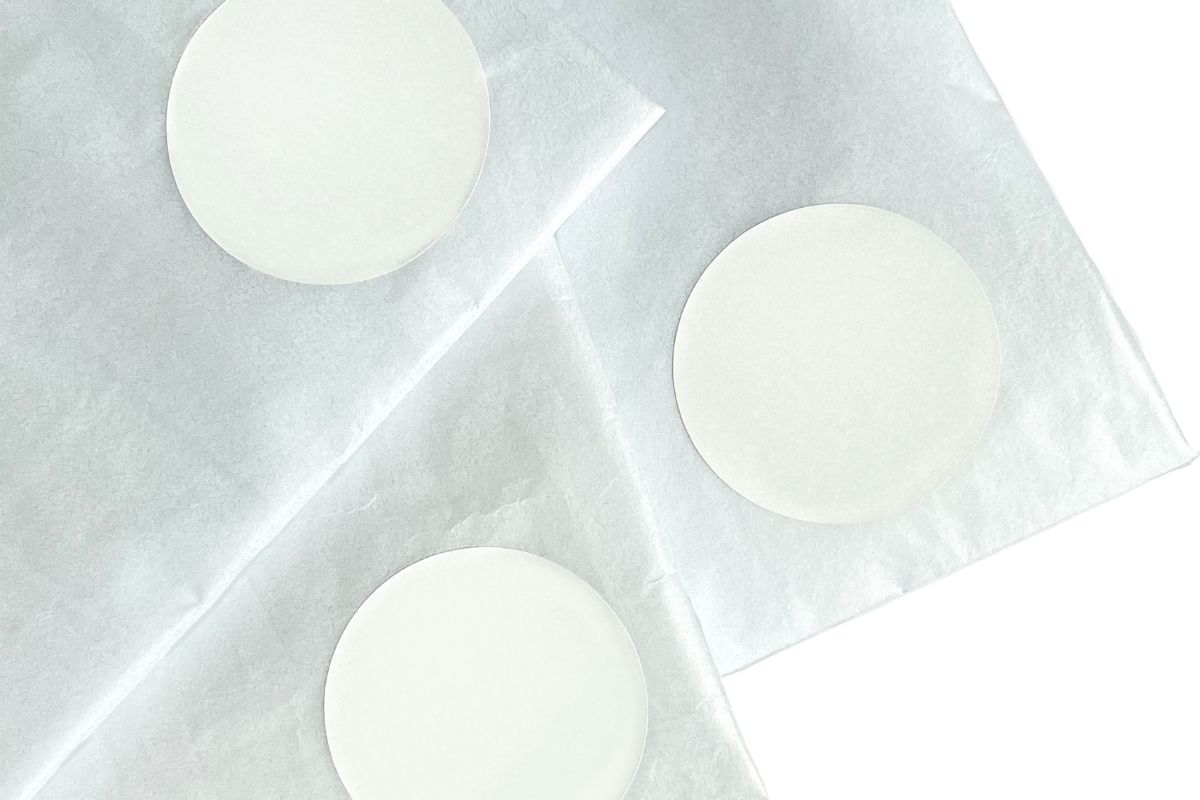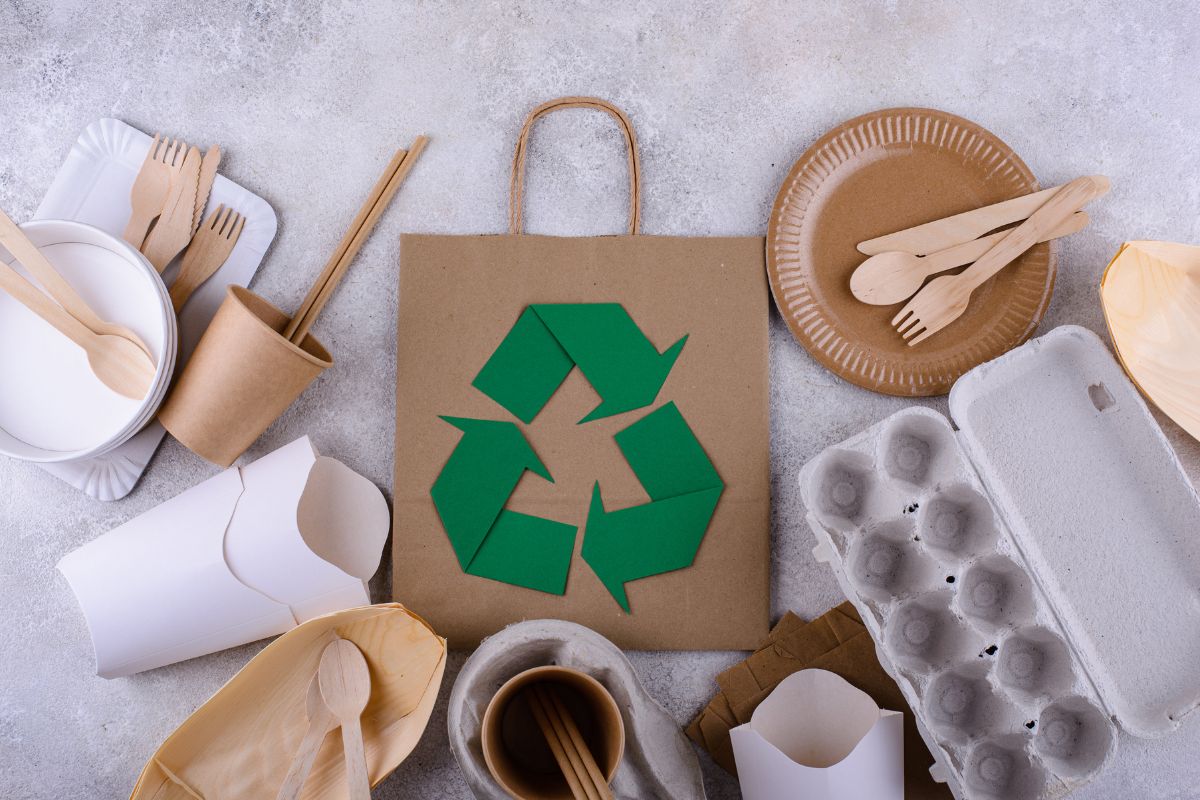You have products to ship, but there’s one important question holding you back: Do you use a shipping box or a mailer? It’s a seemingly minor decision, but it makes a significant difference in terms of costs, product protection, the environment, and the way your brand appears to customers.
Mailers and shipping boxes both have their own merits. Mailers are light, flexible, and inexpensive — perfect for small or fragile items. Shipping boxes provide greater protection, structure, and a more luxurious unboxing experience.
In this guide, we will walk you through the differences, advantages, and trade-offs between mailers and shipping boxes. You will leave armed with an easy-to-follow method to determine which one best suits your SKUs — so you can ship smarter, wow customers, and control costs with confidence.
Quick market snapshot
The world of packaging is evolving quickly: the market for mailer boxes is set to expand from $4.4B in 2025 to $8.4B by 2035 (CAGR ~6.7%), and the overall shipping mailers market is set to expand from $20.7B in 2025 to $28.4B by 2035. Customers are concerned about sustainability — research indicates they are willing to pay a premium for environmentally friendly packaging — and brands are reacting by streamlining packaging formats for cost, protection, and experience.
Understanding the Basics: What Is a Mailer?
In short, a mailer is a pre-made envelope or flat shipper with a typical self-sealing adhesive strip. Picture them as the streamlined, space-saving solution in your packaging arsenal.
Packaging mailers come in several varieties, each designed for specific needs:
Poly mailers – They are very durable, water-resistant plastic envelopes. They’re the preferred option for apparel companies and soft goods that don’t need rigid shipping protection.
Paper mailers – Made from kraft paper or recycled material, and provide a more environmentally friendly option than poly mailers, but still decent protection for lighter items.
Padded mailers – They contain incorporated cushioning (either bubble wrap or paper padding) to guard slightly more delicate items without the extra bulk of a full shipping package.
Rigid mailers – Made of thick paperboard, they are ideal for prints, photos, or documents that cannot be folded or bent.
What makes shipping mailers so beautiful is how easy it is. Open, add product, seal, and send. No assembly, no tape, and not much space in your warehouse to store them.
Unpacking the Alternative: What Is a Mailer Box?
Mailer boxes (corrugated boxes) are constructed from corrugated sheets – those robust materials with the wavy layer in the middle surrounded by flat surfaces that you find in most cardboard boxes.
These boxes are available in a range of styles and strengths. The most popular is C Flute corrugated, which leads with around 39% market share because it strikes a compromise between price and strength. They’re flat-shippable and get assembled when required, so they are storage-efficient compared to pre-assembled boxes.
The main distinction between a mailer box and an ordinary shipping box is usually based on design and intention. Mailer boxes are usually crafted for direct-to-consumer shipping with consideration for presentation and branding, whereas normal shipping boxes are constructed solely for protection and bulk shipping.
When Mailers Win Every Time
Shipping mailers are your best bet in several specific scenarios, and the data backs this up. With paper mailers occupying 37% of the material type market share, companies obviously acknowledge their worth.
For lightweight, flat products – If you are sending apparel, books, wallets, cosmetics, jewelry, or the like, mailers are the default solution. Why incur additional material and weight costs when you do not require them?
When expense is a factor, Mailers are much cheaper on a per-unit basis than boxes. They’re lighter too, which directly cuts shipping expense. For large-volume shippers, the savings quickly add up.
For faster fulfillment – Time equals money in e-commerce. Mailers are live when you open them – just insert, seal, and ship. No box construction, no tape, no trouble. Your fulfillment crew will appreciate it at holiday time.
Storage efficiency – Mailers occupy very little warehouse room. They’re flat, stackable, and don’t command the cubic space that boxes do. When you rent by the square foot, this is significant.
Sustainability goals – Today’s shoppers are concerned about waste. In truth, 82% of shoppers indicate that they’re willing to pay extra for environmentally friendly packaging. Mailers consume less material than boxes and therefore produce a smaller environmental impact and less waste for customers to throw away.
When Shipping Boxes Are the Smart Choice
Here, however, is where shipping boxes excel, and the reasons are valid why mailer boxes are increasing at 6.7% each year.
The unboxing experience – A well-crafted box generates anticipation. When customers open a beautifully branded box with tissue paper, custom inserts, or other special touches, it raises your brand from transactional to memorable. This is particularly important for premium products or subscription services.
Protection for fragile or valuable items – The stiff corrugated sides of shipping boxes are the best protection. Shipping electronics, glassware, ceramics, or other things that might shatter or break? Boxes are a must.
Multiple items in one shipment – Attempting to jam three different products into a mailer? You’re outta luck. Boxes are great for sending multiple items together in one shipment, which actually less packaging across items overall.
Versatility across product lines – Most companies can’t budget to carry several types of packaging. If you’re shipping different order sizes with different products, boxes provide the capability to accommodate nearly any mix.
Reusability factor – Customers reuse boxes as storage, moving boxes, or as boxes to ship their own goods. This added lifecycle value supports and reinforces your brand every time they glance at your box in their closet.
Making Your Decision: A Practical Framework
So how do you actually choose? Here’s my straightforward framework:
Choose shipping mailers if:
- Your products are lightweight (under 2 pounds typically)
- Items are flat or flexible
- You’re shipping single items most of the time
- Minimizing costs is a top priority
- Your brand values efficiency and sustainability
- You need fast fulfillment speed
Choose mailer boxes if:
- Products are fragile or valuable
- You regularly ship multiple items together
- Creating a premium unboxing experience is important
- Items need rigid protection
- You want versatile packaging for various order sizes
- Your brand positioning justifies the investment
Real Talk: You Might Need Both
Many successful e-commerce brands use both. Single-t-shirt orders? Poly mailer. Gift bundles containing many items? Branded box. Delicate jewelry? Rigid mailer. It is not necessary to choose a single solution for all situations; rather, the packaging should be tailored to the unique requirements.
The e-commerce industry is responsible for 48.2% of shipping mailers’ demand, while 70% of direct-to-consumer brands utilize custom-branded corrugated boxes. These aren’t rival figures – they’re evidence that clever brands have the right tool for the right job.
How to test before you commit
- Order samples of both mailers and boxes with your dielines and prints.
- Run pack/drop/wet tests (simulate handling and weather).
- Calculate true landed cost (unit + pouch/box + postage + storage + expected returns).
- Trial a small A/B test: send half your orders in mailers and half in boxes, measure damage, returns, customer feedback, and cost.
Partner with Elements Branding for the Perfect Packaging Solution
Choosing between a mailer and a mailer box is all about selecting the right size for your products, your shipping objectives, and your company narrative. Both have their advantages, and the best strategy usually stems from balancing packaging with protection, price, and being green.
At Elements Branding, we make that decision easier. From recyclable poly mailers and glassine paper bags to custom kraft boxes and premium paper mailers, our solutions are crafted to balance durability, sustainability, and customer experience. We assist brands in testing options, comparing costs, and creating packaging strategies that scale with their business.
Ready to find the ideal packaging for your products? Contact Elements Branding today for expert guidance, tailored samples, and solutions based on your brand’s values. With the correct packaging, you may save money on transportation while also impressing customers and making a long-term impression.
FAQs
1. What is a mailer?
A mailer is a pre-made envelope-style shipping solution (poly, paper, padded, or rigid) that is ideal for lightweight or flat objects.
2. What is a mailer box?
A mailer box, also referred to as a shipping box, is a corrugated or rigid box utilized for firmer protection and a high-end unboxing experience.
3. How fast is the shipping mailers market growing?
The Shipping mailers market will grow from $20.7 billion in 2025 to $28.4 billion by 2035 at a 3.2% CAGR. Mailer boxes market will grow from $4.4 billion to $8.4 billion at a 6.7% CAGR. E-commerce constitutes 48.2% of the shipping mailers’ demand, mailers 62% of volumes being from e-commerce fulfillment.
4. Can I use both mailers and shipping boxes for my business?
Absolutely, and many successful brands do exactly this. Use mailers for a single light item to save on costs and waste, and boxes for numerous items, delicate products, or when establishing high-end unboxing experiences. Synchronizing packaging type with particular requirements maximizes both costs and customer satisfaction.
5. What types of packaging mailers are available?
Major categories are poly mailers (waterproof plastic), paper mailers (environmental kraft paper or recyclable paper), padded mailers (with inherent padding), and rigid mailers (special paperboard for prints and documents). Paper mailers represent a market share of 37%, with poly mailers leading in water resistance and endurance.




